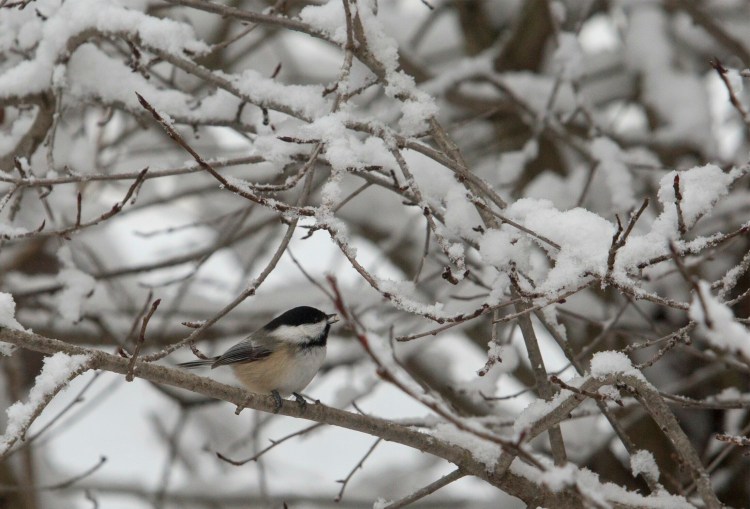Christmas Bird Count season, organized by the National Audubon is now finished. Between Dec. 14 and Jan. 5, birders around the continent fanned out to count the birds of North America. Each count is conducted on a single day within a 15-mile diameter circle. The center of each circle is a permanent landmark, ensuring that the same area is counted from year to year.
Sighting unusual species or encountering particularly large numbers of some species adds spice to a CBC. However, the greatest value of the massive CBC database is to document changes in abundance of our regularly occurring birds.
Begun in 1900, the CBC program has allowed us to conclusively document the expanding range of house finches in eastern North America, following their illegal release by disreputable cage bird dealers in the 1940s in New York City. The invasion of red-bellied woodpeckers and tufted titmice is crystal-clear when looking at the Maine CBC records.
In coming columns, I will describe some of the highlights of Maine CBCs, as usual. But today, I want to focus on the abundance data for some resident birds. In particular, I want to address a question that has been posed to me frequently this fall and winter: Why are birds not coming to my feeder?
Let’s start with some specific explanations. It might be that your feeders are dirty. Feeders should be taken down and cleaned regularly, removing rotting seeds and debris. Second, birds may be snubbing your birdseed. You can’t go wrong with black oil sunflower seeds, some suet and some niger seed. Avoid the cheap birdseed mixes; those seeds are shunned by most birds except house sparrows. If you live in an urban or suburban area, you likely have neighbors who feed the birds as well. Their buffet might be better than yours.
These explanations aren’t adequate on their own. The dearth of birds at feeders is widespread. So, we have two more general explanations. First, the resident birds that frequent our feeders (black-capped chickadees, white-breasted nuthatches, downy woodpeckers, house finches) may be declining in abundance. Alternatively, these birds may be finding adequate food in nature without taking advantage of our largesse.
Let’s use Maine CBC data to see if we can disprove either of these possible explanations. On a CBC, counters count birds everywhere within their assigned area. Some of those birds are encountered at feeding stations and others are found away from human habitation.
We do have a complication when we try to compare bird abundance between years within a circle. Different numbers of observers have participated over the years. The more observers, the more birds will be seen. So, looking at the sum of all chickadees seen is misleading without adjusting for differences in effort.
To permit comparisons, we calculate the number of birds seen per party-hour, where a party is one to many people counting in a particular section of a count circle. Think of birds/party-hour as the average number of birds seen in an hour.
I randomly picked three Maine CBC circles (Mount Desert Island, Thomaston-Rockland and Waterville) and plotted the abundance of black-capped chickadees over the past 15 years. Although the number of chickadees/party-hour is a bit on the low side for all three counts in 2019, none of these values indicates a significant decline. We should be diligent in monitoring the abundance of chickadees, but I see no reason for alarm. We are left with the explanation that chickadees don’t need our hand-outs yet this winter. Keep those feeders stocked!
I did the same sort of analysis for the white-breasted nuthatch and downy woodpecker. Again, I found abundances of these birds in the normal range of variation. The populations of these birds seem to be holding steady.
Herb Wilson taught ornithology and other biology courses at Colby College. He welcomes reader comments and questions at whwilson@colby.edu.
Copy the Story LinkSend questions/comments to the editors.



Success. Please wait for the page to reload. If the page does not reload within 5 seconds, please refresh the page.
Enter your email and password to access comments.
Hi, to comment on stories you must . This profile is in addition to your subscription and website login.
Already have a commenting profile? .
Invalid username/password.
Please check your email to confirm and complete your registration.
Only subscribers are eligible to post comments. Please subscribe or login first for digital access. Here’s why.
Use the form below to reset your password. When you've submitted your account email, we will send an email with a reset code.